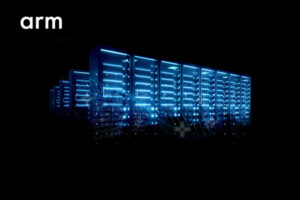Arm guiding the way to the future of HPC Sponsored Content by Arm
If you come to a fork in the road, take it. – Yogi Berra
 The HPC community used to enjoy the benefits of silicon design, but that has laid dormant for over a decade as commodity parts continued to outpace alternative ideas due to Moore’s Law and Dennard scaling. During that time, we had to accept what was being offered and make the best of it for our uses as one architecture dominated the landscape. We are entering a time of renewed opportunity for variety in the data center.
The HPC community used to enjoy the benefits of silicon design, but that has laid dormant for over a decade as commodity parts continued to outpace alternative ideas due to Moore’s Law and Dennard scaling. During that time, we had to accept what was being offered and make the best of it for our uses as one architecture dominated the landscape. We are entering a time of renewed opportunity for variety in the data center.
At SC18 in Dallas, the first Arm-based HPC system on the Top500 debuted at #203. The system is based on the HPE Apollo 70 with the Marvell (Cavium) ThunderX2 (TX2) processor and is the result of many years of work on hardware and software. The system is called Astra and is a high-performance computer that has competitive performance to other platforms, while significant in its size, Astra is only the first delivery in a line of systems from HPE and Marvell. Cray and ATOS also have systems in the field based on the Marvell TX2. In addition to Marvell, Arm-based server silicon has been announced from Fujitsu, Ampere, HiSilicon (Huawei), AWS, and others, with additional products in various phases of design and disclosure.
The recently announced Graviton processor from AWS – Amazon Web Services should not come as a surprise given their purchase of Annapurna Labs a few years back. AWS’s success building silicon and deploying servers in the traditional cloud market is what we, in the HPC community should pay attention to. AWS claims up to 45% cost savings on some workloads with their Graviton processor. As such, Arm is eager to enable co-design activities with strategic HPC entities and sites.
According to John Hennessy and David Patterson, near-term performance gains will come from domain specific designs [ref https://www.acm.org/hennessy-patterson-turing-lecture]. As they point out, there are examples of many thousand-times speed up even in low level matrix operations based on domain specific design implementations. Following their logic, future leading systems will have features that are designed especially for the domains they intend to be used in. Cross-over areas for HPC and ML/AI are likely to be an area of active investment.
Providing core IP to customers and enabling them to innovate and bring to market the end product is Arm’s business. Arm licenses leading edge capability for the product to be customized by our partners along with design support and platform optimization capabilities to help along the way. Starting from a robust ISA is a great launch pad upon which to build the next generation system. It is one of the key enablers for the various server CPUs hitting the market as well as the public exascale projects.
Arm grew up in environments constrained in the areas of power, performance and area (PPA). This has resulted in market leading knowledge and IP. As we work toward exascale computing, optimization of these PPA characteristics is heavily sought after by the HPC community.
On the software side, Arm acquired Allinea Software Limited a little over two years ago. Arm’s efforts and investments, along with work being done by Linaro, Red Hat, SUSE, and many more in the community have produced a robust software ecosystem. This software foundation is enabling Commercial HPC ISVs to port to Arm and many are actively working on it.
Arm is working with our partners to build momentum in server processors and are making great strides in HPC as evidenced by Astra. We intend to bring architectural choice back to HPC and the broader server market with systems that are flexible, efficient and affordable. Our new product line for Infrastructure is called Neoverse and you’ll be hearing a lot more about it as we move forward.
Visit our website to learn more about Arm in HPC.










